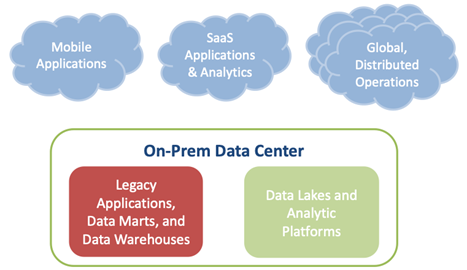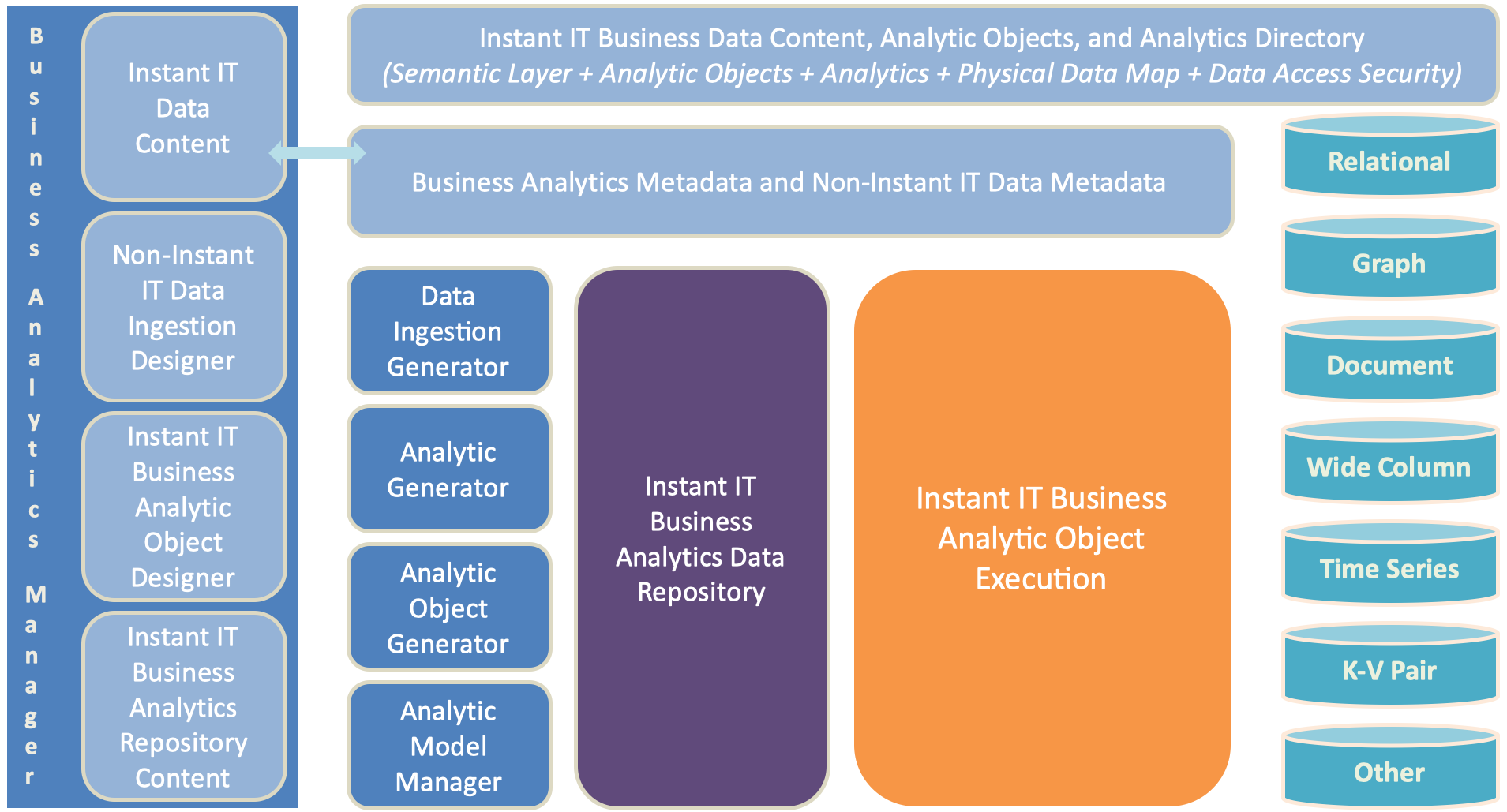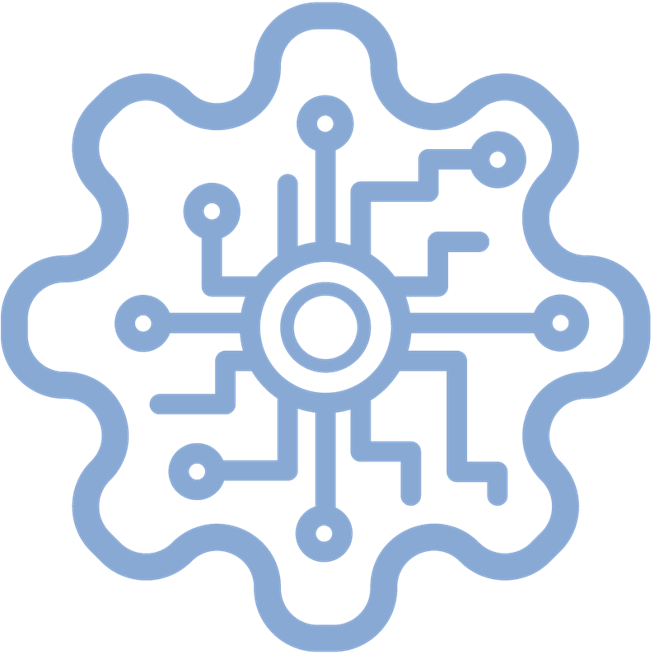Executive Summary: Instant IT Supports Advanced And Automated Analytics And Prepares For AI
While waiting for AI, there are automated analytic methods available to use today. Experience with them is essential for process automation and as a foundation for AI.
Advanced Analytics Reports, dashboards, and financial and operational analyses, are common analytics in use today for insights into regular activities and business decision-making. Predictive and prescriptive analytics using broad-based sets of data are mostly untapped areas of opportunity.
![]()
![]() Automated Analytics Process automation requires advanced analytic methods to improve management and operation of business processes. Automating process and work actions is essential to respond to operational events as close as possible to real time.
Automated Analytics Process automation requires advanced analytic methods to improve management and operation of business processes. Automating process and work actions is essential to respond to operational events as close as possible to real time.
![]()
![]()
Artificial / Augmented Intelligence AI will expand upon advanced and automated analytics, adding knowledge management and other capabilities. Companies using advanced and automated analytics will be better prepared for digital business and AI, once it is enterprise-ready, than those who don't.
Instant IT supports the development, deployment, and management for a range of advanced analytic technologies. For more information, contact InfoNovus.
For those interested in a more about Instant IT® advanced and automated analytics, keep reading or click on an item in the menu at the left to select a specific topic.
Artificial Intelligence Is A Destination
The hype around artificial intelligence makes AI seem like the next big thing. In reality, research into AI has been going on for decades. AI is being hyped today because use of algorithms (especially by internet and financial services companies), increasing capabilities of bots, advances in analytic techniques like deep learning, and changing economics of storing and analyzing large volumes of data are making AI sound like it is ready for broad business applications.
Even if that were the case – and it’s not – business isn’t ready for AI. Broadly speaking, the excitement around AI is more about its potential to perform operational work done by people. In fact, work is being automated already, so what is different about AI? Basically, the potentially far-reaching scope of AI automation.
Consider, for example, performing a health care diagnosis, which doctors train for years to be able to do. It requires:
- a deep base of knowledge that is updated and revised constantly;
- experience dealing with the symptoms and causes being diagnosed;
- clinical data for the individual being diagnosed; and more.
In other words, accurate medical diagnoses require instant access to a very wide range of data and information that is organized and ready-to-use.
This is the core problem in every industry wanting to use AI: necessary data and information are not organized, ready-to-use, or managed as important business assets. Digital data is dispersed, inconsistent, and unready for such broad use. This is due to IT complexity, an obstacle to advanced analytics and artificial intelligence.
This challenge can be summarized into categories of data and information shown in Figure 1:

Figure 1: Legacy IT’s complex distribution of data and information
In addition to simplified management of and access to data, artificial intelligence that operates in real time needs a foundation of advanced analytics to build upon. InfoNovus provides the foundation for developing, deploying, managing, and controlling the advanced analytics that make AI possible. To make this possible, legacy IT needs to be transformed and its management of data and rules simplified, which is why InfoNovus developed Instant IT.
The Foundation For AI Is Advanced Analytics
Advanced analytics, like AI, involves a range of complex capabilities. Advanced analytics requires knowledge about and experience with various mathematical methods including statistical analysis, time series analysis, graph analysis, machine learning, deep learning, and more, each calling for its own approach to organizing data and information. A challenge for data management is creating a single base of unified data and rules for applications and analytics that can support the needs of different physical data organizations.
One physical organization of data can’t support all analytic uses of data, which is a problem for data management. AI and advanced analytics need a single source of unified data and rules that:
- provides consistent data to all business applications and analytics in real time;
- supports the information needs of all business units in a company; and
- can be used for diverse analytic methods that require different data structures.
An approach that has a single source of unified data able to populate one or more sets of structured data is needed, as shown in Figure 2:

Figure 2: Instant IT® simplified data management for applications and analytics
Instant IT® computer-generated applications update unified data, consistent with applicable unified rules, in real time. Structured data for analytics needs to be updated in real time as well, and data movement must be avoided to minimize latency. The process for developing analytics, like the process for developing applications, needs to be automated and kept consistent with a business’s unified data and rules.
In practice, analytics are developed by individual data scientists and analysts. To support individual data scientists and data analysts in their work, each analytic method requires its own technology and data storage, contributing to IT complexity. Instant IT provides an environment to develop advanced analytics that are consistent with unified data and rules that Instant IT uses to computer-generate analytic objects and automated analytics.
Instant IT Manages The Design And Deployment Of Analytics
The Instant IT® Business Analytics Manager transforms, accelerates, and unifies development of business analytics. Data scientists and data analysts spend 80% of their time acquiring and preparing data to perform an analysis. InfoNovus Instant IT® Business Analytics Manager facilitates acquiring data, including third-party and non-Instant IT data, as shown in Figure 3:

Figure 3: Instant IT® Business Analytics Manager framework
Like Instant IT® Business Design, analytic data and rules are managed as unified business assets: they apply to all analytics and applications that use them so they are available and ready-to-use in future analytics and applications. After all, an analytic is a sophisticated form of a rule that is to be implemented and used as part of a business operation, especially when it is an automated process action.
Unlike Instant IT® Business Design, Instant IT does not yet automate development of advanced analytics like it does development of a business applications. The Instant IT® Business Analytics Manager does manage and simplify data management for analytics, which leaves more time for data scientists and data analysts to develop analytic solutions.
Instant IT® Business Analytics Manager is included as part of InfoNovus’s Business Design. Like Business Design, the Business Analytics Manager captures every element of a Business Analytic as digital business metadata and the analytic itself as a rule. This allows a Business Analytic to be reused, shared and governed, managed, and controlled.
Advanced Analytics Workflow
Analytics are developed to solve, if possible, specific business problems. A data scientist gathers data that may be helpful for understanding a problem and performs various analytic activities. With no data preparation, because a base of unified, granular, and ready-to-use data eliminates this work, a data scientist can analyze the relationship of each variable of a problem to others, individually and in combinations. Additional data from third parties and non-Instant IT® applications can be included.
Data can be segmented and many other techniques applied to focus the analytic on a possible solution to the problem. The solution itself, however, will be developed by a data scientist or data analyst combining advanced analytics with business understanding.
An analytic is the result, as seen above, of several analytic techniques. Often, individual analytics are combined into an analytic object, such as a dashboard. An analytic object, like a Process Action in a workflow, is a unit of work done with available resources without interruption.
There are possibilities for automating some of advanced analytics work but data scientists will do the critical work, especially when an analytic requires business understanding to solve a problem. Analytics design focuses on data elements analyzed for a business result. Figure 4 shows the workflow for developing a business analytic solution:

Figure 4: Instant IT® Business Analytics development workflow
An analytic object is a set of individual analytics packaged into a form that increases their value or utility, like a dashboard. The intent behind an analytic object is that its value is greater than the sum of its individual analytics. Increasingly, analytic objects are a set of automated machine learning and/or deep learning algorithms used in real-time diagnostic or prescriptive analytics.
Managing Advanced Analytics
The Internet of Things (IoT) produces gargantuan volumes of data that need to be analyzed in real time for diagnostic insights. Advanced analytics are essential elements for automation of prescriptive actions for real-time business operations. Cybersecurity is another important use case, one that constantly needs to identify new patterns that signify intruders or threats.
These are mission-critical applications of sophisticated real-time advanced analytics. Instant IT supports them with more than the development environment described above. Analytic models need to be monitored to ensure they operate as expected. Every analytic was developed using data at a period in time but changing business dynamics can alter the mix of variables, which may change the effectiveness of the analytic.
Machine learning analytics rely on analyzing patterns and making inferences. Machine learning analytics can be made to be self-adjusting but that does not mean they will be effective over time. Every analytic needs to have a target level of effectiveness and must be monitored to see whether it is achieved. And this needs to be automated when an analytic is put into operation.
Therefore, advanced analytics need to be managed, governed, monitored, and controlled, which must be part of the analytics development and automation process. Management, governance, and control are provided as part of Instant IT® Business Design.
Real-Time Advanced Analytics With Instant IT
Advanced analytics are finding their way into almost every business, unfortunately as the responsibility of individual groups of data scientists or data analysts. This approach is the analytics version of operational silos. Artificial intelligence, when it gets here, needs a holistic view data and information.
What makes artificial intelligence different from advanced analytics is AI’s use of knowledge representation, language processing, reasoning, and more. These are extensions in breadth and scope of advanced analytic methods used in diagnostics and prescriptive analytics, machine and deep learning, and automation.
Developing capabilities with advanced analytics will prepare the organization for AI once it is here. Processing streaming data in real time with advanced analytics and automating process actions, built upon Instant IT® unified data, rules, management, governance, and control will provide a foundation for adding AI capabilities as they become available.
Instant IT® Business Analytics vs. Legacy Analytics
Instant IT® Business Design replaces legacy analytics development with a Business Analytics Manager where the design, development, and deployment of analytics as business assets are the central focus. Instant IT® Business Design also provides unparalleled rigor in operational business process actions and analytic objects — all of which is needed for effective operational and automated analytics.
Instant IT® Business Design captures digital business metadata that fully describes the organizational, operational, and analytic aspects of the business. This business metadata is the basis for IT automation of application and analytics development that supports consistent data and rules.

